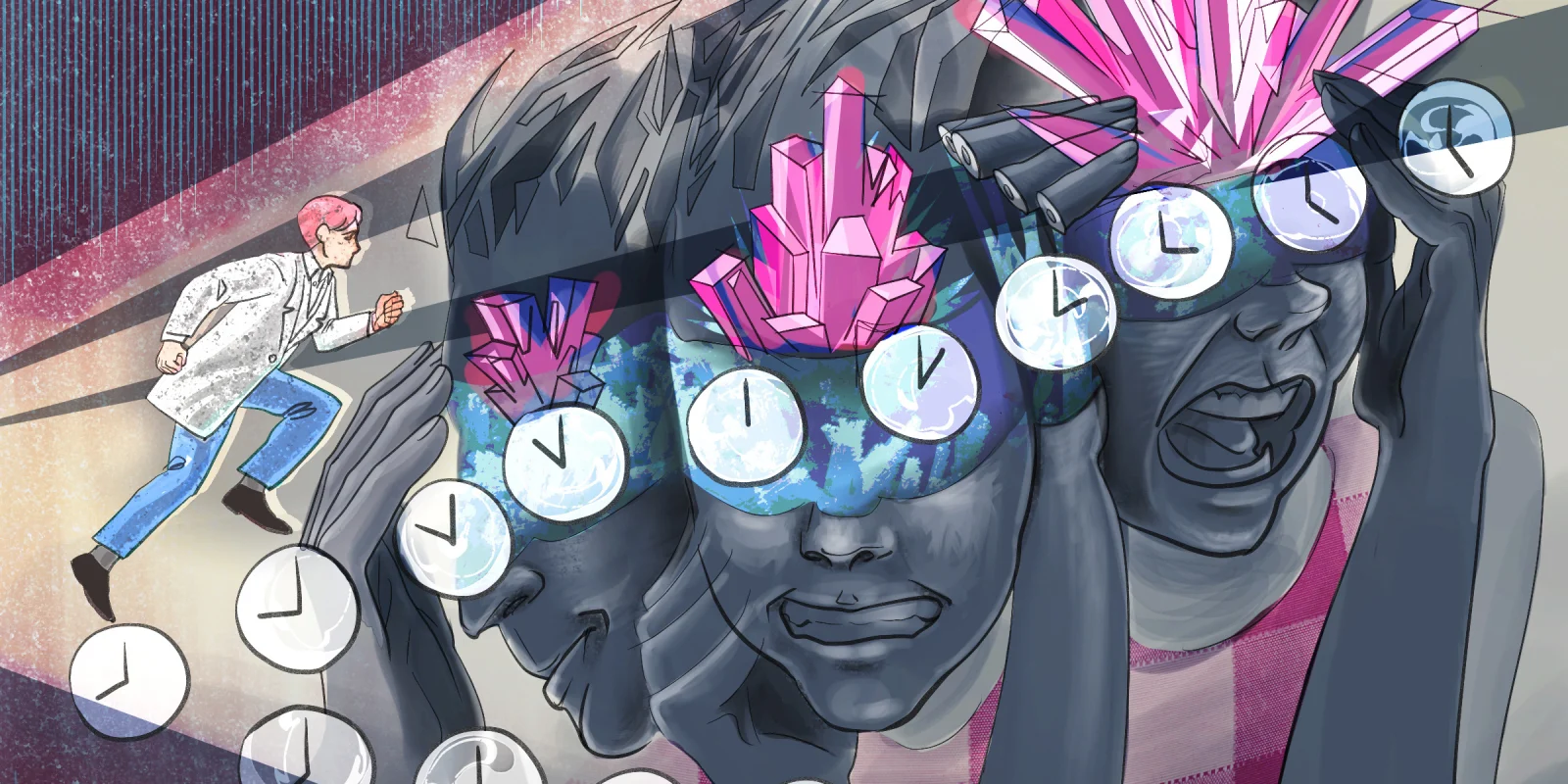“The pain is so bad, I want to die.”
When she said this to me, her eyes began to water. So she tightened her fist and closed her eyes. Her voice faltered as she fought back tears, and she continued to explain how her pain began.
It started after she lifted a chair in her apartment. She felt a “sharp twinge” in her lower back and she dropped the chair. After some rest, she could take a few steps. But as months passed, her back pain intensified, she developed a shooting pain along her right leg, and her foot was weak. Some days, it was better. Some days, it was worse. But the pain never went away. She had seen multiple doctors before, but she'd had no imaging done. She got an MRI, and I saw it before I spoke with her. It showed an enormous lumbar disc herniation with nerve root compression. Her clinical picture made sense, but what had taken so long? She had been in agonizing pain for months.
“When I saw the first doctor, he told me I needed to lose weight,” she said. “That was pretty much it.”
She was in her late 20s, and she weighed more than 300 lbs. She started dieting as a preteen, but struggled to keep the weight off. She made efforts to exercise, and her two children kept her active, but the pain was so debilitating that she could only walk a few feet at a time. I noticed a wheelchair in the room, but she intentionally looked away from it, and she explained that her family had brought her to the ED. It’s true that obesity is associated with an increased risk of chronic pain, but pain can also impede successful weight loss. Internalized shame and perceived stigma from weight bias is also associated with pain, even when controlling for demographic variables. If her pain was so bad that she couldn’t walk, what would a sustainable exercise regimen look like? As she recounted her first doctor’s recommendation, she shook her head and squeezed her eyes shut. I wondered how many times she had been told to lose weight over the last several months, and how those directives made her feel.
“I keep telling everyone the same thing. I’ve been to the ER for this pain before, but nothing’s worked.”
She explained that it was not her first time seeking help for her pain. Despite progressive pain and weakness, she received the same cursory suggestions from multiple doctors: weight loss, exercise, acetaminophen, ibuprofen. She was also told to “focus on her mental health.” These strategies can be effective, but in her case, they were clearly unsuccessful. I wondered why, after first, second, and third opinions in clinic offices, urgent care rooms, and ED pods, she was not heard. How were her frustration, wheelchair, and tears so easy to ignore?
At a loss for an explanation, I wondered to myself if her treatment would have been any different if she were white? Or if she were a man? Evidence suggests that this may be the case. Postpartum Hispanic women and Black women are more likely to report higher pain scores, but they receive less daily pain medication. Women are more likely than men to report ineffective pain relief after following a treatment plan, and they’re also more likely to be referred for mental health services and prescribed antidepressants when they present with pain.
“One guy gave me hydrocodone, but it only lasted two weeks. When I tried to get it refilled, they wouldn’t do it. The next available appointment wasn’t for weeks.”
As she discussed the ED doctor who gave her hydrocodone, her tone changed from frustrated to perplexed. For those two weeks, her pain improved. It was still there, but she could walk for longer distances. She explained that she followed the doctor’s instructions to the letter. She took no more than one or two pills per day, and she did not drink alcohol while taking them. But, when they ran out, she could not get them refilled.
“They worked,” she remarked. As opiates often do. But this pattern is far too common. Despite their limited efficacy for many types of pain, more than 60 million patients have one or more active prescriptions for opiates. They wash over receptors throughout your body, bringing with them a panacea of relief and euphoria. My patient may have felt better, but the underlying cause of the pain was still there, the body and mind now primed for dependence. Had she continued to use hydrocodone, she may have done far worse. Opiate use leads to 115 deaths each day in the U.S., with far more people trapped in the throes of addiction.
I was able to explain how her disc herniation could be causing her back pain, leg pain, and weakness, and we reviewed surgery as a potential option. Even though she was still in pain, she seemed relieved to have a potential explanation. She asked why no one had ever done an MRI before today. Admittedly, it’s a simple question and I couldn’t give her an answer. Pain is a nuanced medical and social problem, and each presentation is unique. Unfortunately, we’re often left with faulty measures of pain, such as the ubiquitous “1-to-10” scale, and pressure to prioritize pain relief and treat it as “the fifth vital sign” to improve patient satisfaction. Conversely, we balance these priorities with the knowledge that these campaigns have directly contributed to the opioid epidemic and that we may not always be able to take addicted patients at their word. However, these formulaic approaches can distract us from a primary responsibility in pain management: To confront our biases and listen carefully.
How would you rework the pain scale? Share your ideas in the comments.
James Caruso is a neurosurgery resident at UT Southwestern Medical Center in Dallas, TX. He plans to specialize in complex spine surgery, and his research focuses on elucidating the molecular mechanisms driving chronic neck and back pain. He is a 2021-2022 Doximity Op-Med Fellow.
Illustration by April Brust







